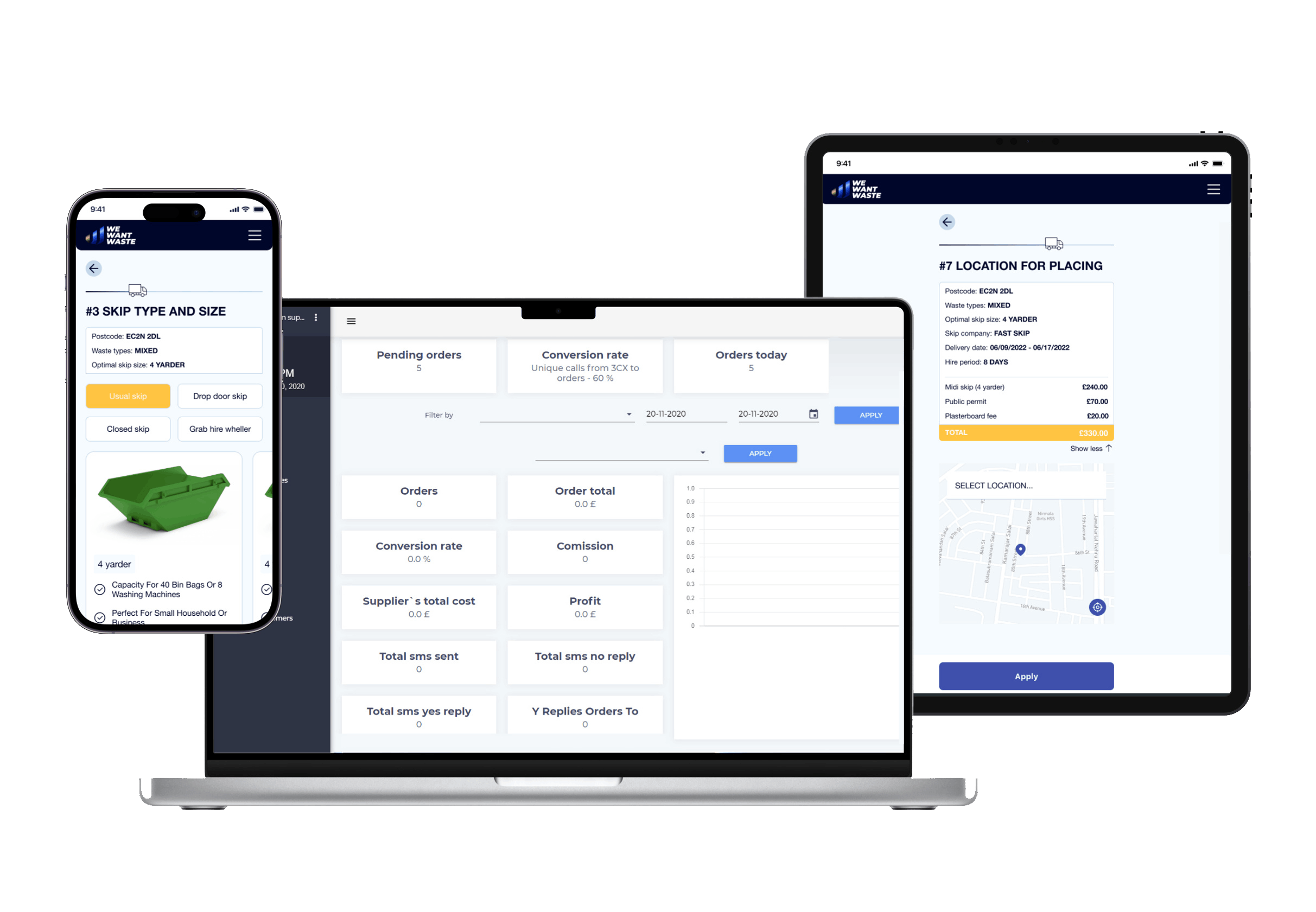IT staff augmentation is an alternative to traditional outsourcing, where companies bring in external, often remote, experts to enhance their team’s skills and capacity while staying within a budget.
In 2023, the technology industry led the way in remote work adoption, with 67.8% of tech employees working fully or mostly remotely. This rise in remote work has made staff augmentation a more practical and popular solution, allowing businesses to tap into a global talent pool without the limitations of geographic location.
For staff augmentation in the USA, you have two options: onshore or nearshore/offshore. Rates within the US are generally higher than in other countries, but by how much? And does hiring augmented contractors cost the same as hiring augmented employees?
Here’s everything you need to know about how much augmentation costs compared to other hiring options, the differences between augmented employees and contractors, and how to choose a good staff augmentation agency. Whether you’re running a startup or managing a mid-sized company, understanding these will help you make smarter hiring decisions.
Disclaimer: Comparison data is based on aggregated data from Indeed.com, Glassdoor.com, Payscale.com, Dice.com, and other open sources and industry reports.
IT Staff Augmentation Services in the USA: An Overview
IT staff augmentation is a business strategy for temporarily hiring external tech professionals to supplement your teams. The model is widely used across industries in the USA, especially in sectors like technology, finance, healthcare, and manufacturing, where the need for specialized IT skills can fluctuate.
We've covered the ins and outs of staff augmentation elsewhere, so here's just a quick summary of the benefits:
Benefits of Staff Augmentation
-
![done mark]() Flexibility
Flexibility
-
![done mark]() Talent
Talent
-
![done mark]() Cost-effectiveness
Cost-effectiveness
-
![done mark]() Scalability
Scalability
-
![done mark]() Management
Management
-
![done mark]() Administration
Administration

- Flexibility: Augmentation lets you quickly fill skill gaps and add IT professionals to your teams when needed to get your product to market faster.
- Talent: Staff augmentation gives you access to a global pool of specialized IT talent, particularly useful for complex or niche projects.
- Cost-effectiveness: You only pay for the skills you need when you need them.
- Scalability: Scale your teams up or down according to project demands.
- Management: You directly manage and oversee the work of augmented team members, making integration easier.
- Administration: Your service provider handles recruitment, onboarding, and paperwork, reducing your administrative burden.
A reputable and experienced IT staff augmentation services provider can bring you all these benefits and ensure seamless integration of augmented staff into your team and processes.
Are you considering augmenting your team with tech specialists who get the job done? Contact Giraffe Software for a consultation!
Market Analysis of Salaries and Contractor Rates in the USA
The increasing demand for digital transformation, cloud computing, cybersecurity, and AI-based solutions has driven the growth of the US IT job market. The shift towards remote and hybrid work models has fueled demand even further. This demand is reflected in rates demanded by staff augmentation companies in the USA.
IT salaries by US state
Since the cost of living, taxes, and local demand for talent most influence salary rates, US salaries vary from state to state. Tech hubs also tend to offer salaries 20-30% above the national average, pushing up compensation in California and Washington.
Here’s a rough idea of what IT employees can expect to earn across the US.
State
Salary range
Average salary
California
$109,000 - $150,000
$121,047
Washington
$103,000 - $140,000
$118,008
New York
$100,000 - $135,000
$113,458
Massachusetts
$95,000 - $130,000
$126,461
Texas
$108,000 - $125,000
$107,376
Maryland
$109,000 - $120,000
$114,766
Colorado
$85,000 - $120,000
$117,756
North Carolina
$85,000 - $115,000
$114,539
Georgia
$80,000 - $115,000
$113,656
Illinois
$85,000 - $115,000
$113,656

IT contractor rates vs. full-time employee salaries
Hiring contractors gets you flexibility and niche skills without commitment, but you pay more for the convenience. Contractors can charge nearly 130% more than what a full-time employee would earn for similar work to compensate for overheads and the absence of job security.
For example, a software developer contractor's hourly rate might work out as $145,000 to $312,000 a year, depending on their location, expertise, and demand. At the same time, a full-time software developer's salary might range from $90,000 to $150,000 a year but include insurance, paid leave, and consistent working hours.
Let's look at how this works for different positions, assuming that there are 2080 work hours in one year.
Position
Contractor hourly rate
Contractor annual rate
Full-time hourly rate
Full-time annual rate
Software developer
$70-$150/hour
$145,600-$312,000/year
$43-$72/hour
$90,000-$150,000/year
Data scientist
$80-$200/hour
$166,400-$416,000/year
$46-$77/hour
$95,000-$160,000/year
Cybersecurity specialist
$90-$170/hour
$187,200-$353,600/year
$48-$77/hour
$100,000-$160,000/year

Trends in IT compensation
2023 was a year of big shifts for tech professionals. After the pandemic boosted demand for cloud services, companies started cutting back on spending as recession fears grew. This led to major FAANG layoffs early in the year. Despite this, the tech job market stayed resilient, maintaining a steady demand for skilled professionals.
The 2024 Dice Tech Salary Report shows that
- Tech salary growth has slowed. This started between 2022 and 2023, and early-career professionals (less than five years of experience) have been affected the most.
- Compensation dissatisfaction is on the rise. Only 49% of tech professionals are satisfied with their compensation, a drop from 55% in 2022.
- Alternative benefits are becoming more attractive. Companies increasingly offer alternative perks like stock options, remote work stipends, and wellness programs.
- AI and data analytics positions are seeing fast-growing salaries. Companies are willing to pay more for expertise in these areas, especially for roles that support innovative initiatives.
We’re also seeing the impact of remote work on tech salaries as companies adjust compensation based on geographic location. Tech workers in lower-cost regions may see salaries slightly lower than their counterparts in high-cost areas like Silicon Valley.
More tech professionals are also opting for contracting roles, where they can often earn more than full-time employees. This trend is particularly strong among senior-level professionals and those with niche expertise.
Client reviews
Don’t just look at the number of reviews and average rating; sit down and read them. They can provide invaluable insights into a provider’s approach, values, and communication style. Use this information to choose a company you’ll be comfortable working with.
Outside these points, you'll need to consider your business plan and needs: whether you’re looking for onshore, nearshore, or remote cooperation and how you want to be charged. Here are the main options:
Employee Salary Comparison: USA vs. Eastern & Central Europe
Now you have an idea of the salaries charged by IT staff augmentation companies in the USA, let’s see what you can expect if you augment from Eastern and Central Europe.
Team extension with employees in Eastern & Central Europe vs. onshore US employees
The average gross salary for IT professionals in the USA is significantly higher than in Eastern and Central Europe. For example, a mid-level software engineer in the USA might earn between $100,000 and $140,000 a year; a similar mid-level software engineer in Poland or Ukraine could earn $30,000 to $50,000 yearly.
However, employers in the US must pay Social Security, Medicare, and federal and state unemployment taxes, plus health insurance and other benefits. Here’s an approximate breakdown for a mid-level software engineer with a gross salary of $120,000:
- Social Security tax — 6.2%
- Medicare tax — 1.45%
- Federal unemployment tax — 6% on the first $7,000 of each employee’s wages
- State unemployment insurance — around 1-2% on average, depending on the state
- Workers' compensation insurance — around $0.30 per $100 of payroll
- Health insurance — around $7,911 (2023 data)
- Retirement contributions (401(k) match) — typically 3% of gross salary
And here’s what you get when you sum it up:
Payment type
Estimated amount for $120,000/year
Social Security tax
$7,440
Medicare tax
$1,740
Federal unemployment tax
$42
State unemployment insurance
$300
Workers' compensation insurance
$360
Health insurance
$7,911
Retirement contributions
$3,600
Total additional payments
$21,393

Therefore, in addition to the gross salary of around $120,000 for a middle software engineer in the US, the employer will pay $21,393, which amounts to $141,393 annually.
Now, let's look at the numbers for team augmentation in Central and Eastern Europe. Each country requires employers to pay additional payments to their employees. However, the client doesn't pay these additional charges since the team augmentation vendors are the employers. The augmented team provider covers all social security contributions (pension, disability, accident, etc.) and health or work insurance.
Extending your team with a middle software engineer from Central or Eastern Europe will still cost you about $30,000-$50,000 a year, i.e., only the gross salary without additional costs.
Position
USA gross salary
USA gross salary + payments
Central & Eastern Europe
Middle software engineer
$100,000-$140,000/year
$119,000-$164,000/year
$30,000-$50,000/year

To illustrate, if you were hiring ten software engineers, the total annual costs would be around:
- Onshore (USA): $1.19 million-$1.64 million
- Staff augmentation (Eastern & Central Europe): $300,000-$500,000
This shows annual savings of around $890,000-$1.14 million, or 70%-75% if you opt for staff augmentation in Eastern and Central Europe.
Contractor Rates Comparison: USA vs. Eastern & Central Europe
Using IT contractor augmentation services based in the USA will also cost you more than offshore contractors. Here’s the breakdown.
Team extension with contractors in Eastern & Central Europe vs. onshore US employees
Contractor rates vary widely depending on industry, experience level, and location. In the USA, the average IT and software development rate is around $100-$200 per hour.
In Eastern and Central Europe, the price tag is much lower: employees earn, on average, around $20-$46 per hour. Even for highly specialized skills, rates are still considerably lower, often peaking at around $100 per hour for top-tier experts.
Eastern and Central European countries also often have more streamlined contractor agreements with fewer legal and compliance hurdles, leading to lower overall costs. Some countries even offer favorable tax regimes for contractors.
And since these contractors typically work on a project basis with clear deliverables, there are fewer unexpected costs, which makes budgeting more predictable.
To take a similar example as above, hiring a team of ten contractors in the US working at an average rate of $150 per hour, 40 hours a week, would cost you just over $3 million a year.
Outstaffing in the USA pricing formula
10 contractors
*
$150/hour
*
40 hours per week
*
52 weeks per year
=
$3,120,000

Hiring the same team in Eastern and Central Europe at an average rate of $30 per hour would cost around $624,000 annually.
Outstaffing in Eastern and Central Europe pricing formula
10 contractors
*
$30/hour
*
40 hours per week
*
52 weeks per year
=
$624,000

This represents cost savings of 80% or about $2.4 million annually.
Augmented Employees vs. Augmented Contractors: Similarities, Differences, and Benefits
There are two hiring options for staff augmentation, and you should be clear about which one you need.
Augmented employees are full-time employees on the supplier company's payroll who are usually integrated into the company’s processes and structure.
Augmented contractors, on the other hand, are external individuals (or firms) hired for a specific period or project. They are not part of the company's regular payroll but work on a contract basis.
The benefits of employees and contractors have some overlap. For example, both augmentation options can help you save on overhead costs, including office space, hardware, and recruitment expenses.
They also both provide quick access to a wide range of skilled professionals, often from global talent pools, so you can scale teams up or down as needed and quickly replace underperforming hires.
That said, the differences between augmented employees and augmented contractors make it worth considering each option carefully before deciding.
- Cost-effectiveness: Though contractors can be more cost-effective for short-term needs, augmented employees are usually better value for longer projects.
- Commitment: Augmented employees will usually get more involved in your longer-term goals and projects, which means they’re more integrated with the team. Augmented contractors, on the other hand, are focused on delivering specific results within a set period without more profound obligations.
- Skills development: You may benefit from offering augmented employees internal training programs. Because their projects are long-term, this kind of skills development can pay off, as augmented employees will have enough time to benefit you. In contrast, investing in contractor development makes less sense since they’ll switch to another client soon.
We can summarize the main differences between augmented employees and contractors like this:
Characteristics
Augmented employees
Augmented contractors
Cost savings
+
+
Talent access
+
+
Painless team scaling
+
+
Commitment to the company
+
-
Good for short-term projects
-
+
Training and skill development
Internal
External

Assemble an augmented team of highly skilled tech professionals within weeks. Giraffe Software can make that happen.
Choosing the Right Staff Augmentation Company in the USA
Finding a good staff augmentation company starts with clearly defining your needs, budget constraints, expertise required, project scope, and timeline. However, you should also be aware of common red flags.
Staff Augmentation Partner Red Flags

Offering contractors instead of employees

Inconsistent pricing

Offering junior-level contractors

Offering unqualified contractors

Offering contractors instead of employees
While contractors can offer flexibility, they won’t usually be suitable as long-term team members. Some staff augmentation vendors might recommend you hire contractors as a way to cut their costs. Look for a firm that can provide both contractors and employees and give unbiased advice on your best option.
Inconsistent pricing
Inconsistent pricing can indicate a lack of transparency or hidden costs. It might also suggest that the company is not well-organized or overcharges clients. Check that your candidate company has clear, consistent pricing models and detailed breakdowns of costs.
Offering junior-level contractors
Ensure that the company has contractors with the appropriate level of expertise for your needs. To check, ask for detailed profiles and references for the proposed contractors.
Offering unqualified contractors
Even worse than junior-level contractors are contractors who aren’t properly vetted or lack any qualifications for your planned project work. Request previous work samples, check references to avoid this, and verify the company’s vetting process.
Signs of a great outstaffing partner
Not all flags are red! There are also positive signs that an augmentation vendor is a reliable partner interested in helping your business and not just making money.
Great Outstaffing Partner Signs

Is open to feedback

Has strong portfolio and technology stack

Cherishes partnership and trust

Is proactive in problem-solving

Is committed to a long-term partnership

Cost efficiency
A great outstaffing partner will offer competitive rates without compromising on quality. They’ll be transparent about pricing and help you achieve significant cost savings while providing top-notch services.
Feedback
Positive client feedback on review websites like Clutch or GoodFirms strongly indicates reliability and effectiveness. It reflects a company’s ability to deliver on its promises and meet your expectations.
Portfolio and technology stack
A strong portfolio and a diverse technology stack indicate that the company has a broad range of experience and expertise. Take time to review a partner’s portfolio and assess their tech stack to ensure they can deliver. (You can check out Giraffe’s portfolio here.)
Partnership and trust
A great outstaffing partner will work to build a strong, collaborative relationship with you, fostering trust and mutual respect. This helps align goals and ensure smooth project execution. Look for signs of a proactive approach to problem-solving and a commitment to long-term partnership.
Our Expertise
Giraffe Software is a tech partner for staff augmentation in UX design, mobile development, and Node.js development services. We’re dedicated to cutting IT budgets by a minimum of 35%- 45%. Working with us gives you access to a team of 70+ in-house tech specialists and a pool of 30,000 pre-vetted experts.
Over the last seven years, we’ve delivered 120+ projects for 60+ clients across Europe and the US and earned glowing reviews on Clutch, Upwork, and GoodFirms. Here’s a quick sample of our projects:

Looxis
looxis, a German company specializing in photo-etched gifts, needed to move their sales online and wanted an eCommerce store with 2D and 3D modeling features.
When their previous vendor didn’t cut, we jumped in and shortlisted eight qualified candidates in three days, so their team was complete within two weeks.
We worked together for five years, helping LOOXIS launch a successful digital store and cut operational costs by over 50%

Looxis

2 weeks
To assemble the team
2 months
To build an online store
29%
Of budget saved
5 Years
Cooperation Time

REM Waste
REM Waste, a UK waste management company, needed a new CRM system to scale its business after its previous developers failed.
We quickly assembled a team of developers, an architect, a PM, and a QA specialist and delivered a high-quality MVP in just four months, helping REM Waste secure additional funding.
They saved 38% compared to local hiring, and they’re now planning a SaaS solution based on their new CRM.

REM Waste

3 days
To assemble the initial team
5 months
To launch an MVP
38%
lower budget compared to local rates
+10 months
To finalize the platform
Conclusion
IT staff augmentation is a flexible and cost-effective way to get the talent you need when you need it. While the USA has a strong market for IT professionals, there’s much to be said for the cost savings and quality talent you can find in Eastern and Central Europe.
By carefully weighing your options and picking the right staff augmentation partner, you could save up to 70% on staffing costs without sacrificing quality. And that’s precisely what Giraffe Software delivers.
Contact us now, and let’s start assembling your augmented team today!
Frequently
Asked
Questions
IT staff augmentation is a way to temporarily hire external tech experts to fill skills gaps or add extra hands to an in-house team.
It’s a cost-effective solution for projects that need specialized skills or have spikes in workload
IT staff augmentation in the US is considerably more expensive than in Eastern and Central Europe: going offshore can save companies up to 70% on staffing costs.
For instance, a mid-level software engineer in the US might pull in $100,000 to $140,000 a year, while someone with similar skills in Eastern Europe might earn $30,000 to $50,000.
Contractors might cost more per hour and may not be as invested in long-term projects. Plus, managing contracts can lead to extra administration, costs, and legal complexity.
Tags:
AUTHOR

Prystupa Eugene
Co-Founder
Eugene is a Co-Founder and CTO at Giraffe Software. He is seasoned technology executive with over 10 years of experience in the industry. Eugene leads the development and execution of the company's technology strategy, driving innovation and ensuring alignment with business goals.

Aligned in both project goals and work style, Giraffe Software has proven to be a productive, cost-effective partner. Their clear communication and adaptability have earned them an expanded scope.

Johannes Renaud
Director, LOOXIS GmbH
 Germany
Germany
Their reliability, tech expertise and quality of service set them apart. Giraffe Software is responsive and accommodating, establishes a smooth workflow through open communication.

James Lenoble
CEO, GrowMindGrow
 USA
USA
I am happy I can finally start gaining traffic and fulfill my goals. The vendor's collaboration method has been a strength, as they listen carefully to ensure complete understanding of objectives and challenges.

Ori Levi
Owner, Sosimple
 Israel
Israel
We liked their work so much we've brought them onboard other software development projects. Giraffe Software's project management, rates, and quality of code were all excellent.

Johan van der Walt
President and CEO, Evosolve
 Hungary
Hungary

 Ukraine, Dnipro
Ukraine, Dnipro
Mechnikova str. 19, office 705
 Estonia, Tallinn
Estonia, Tallinn
Harju maakond, Kesklinna linnaosa, Kaupmehe tn 7-120





 Flexibility
Flexibility

